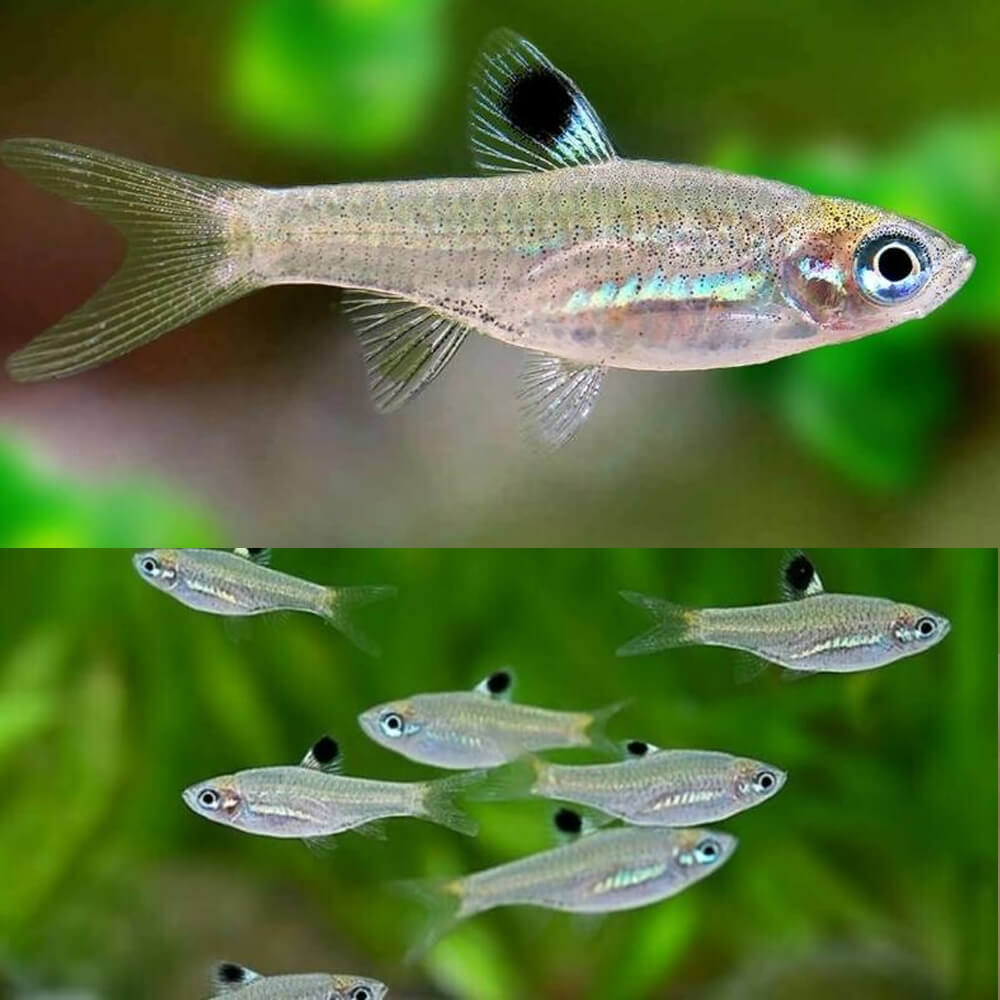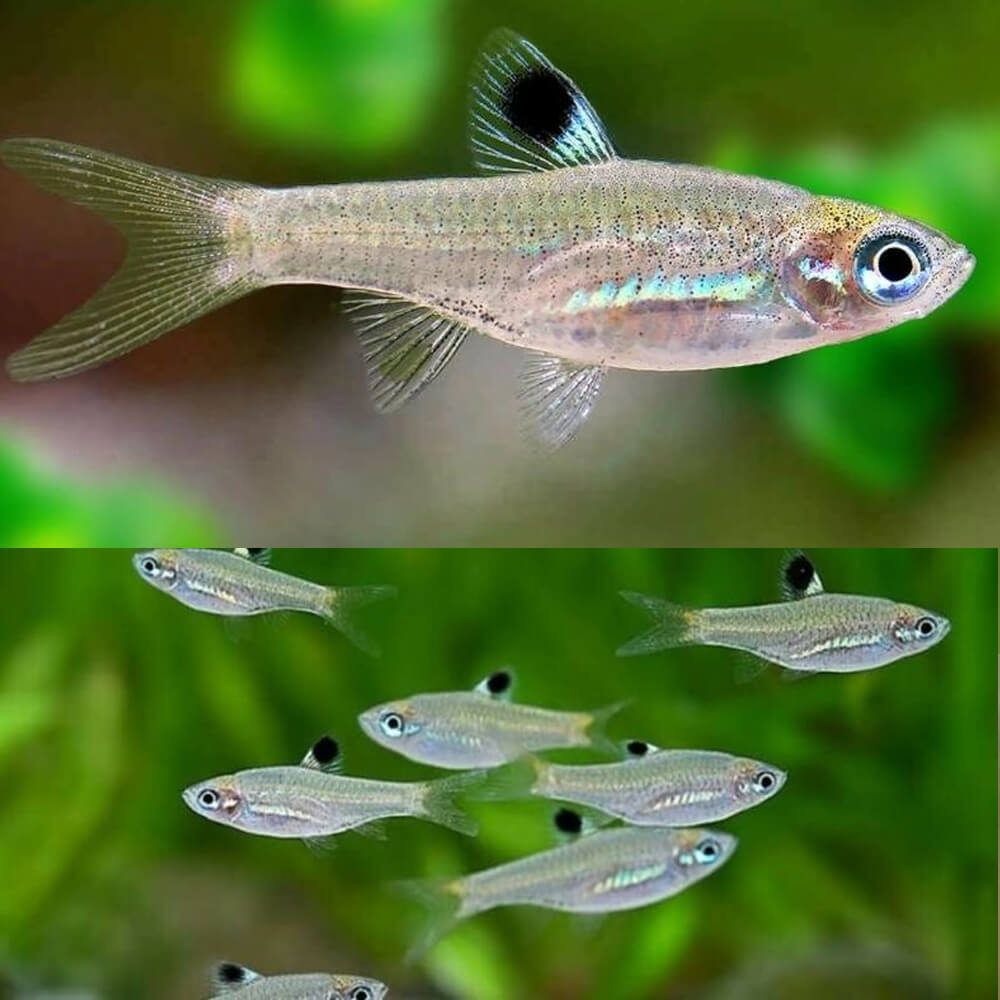Rasbora - Emerald Eye (Rasbora dorsiocellata)
Rasbora - Emerald Eye (Rasbora dorsiocellata)
Size 30 – 35 mm.
Aquarium Size
A group will need an aquarium with base dimensions of 45 ∗ 30 cm or more.
Maintenance
Choice of décor is not as critical as water quality although this species does look particularly effective in a well-planted tank with a dark substrate.
To see it at its best a natural-style set-up can also make an interesting project.In this case a soft, sandy substrate is probably the best choice to which can be added a few driftwood roots and branches placed in such a way that plenty of shady spots are formed.
If you can’t find driftwood of the desired shape common beech or oak is safe to use if thoroughly dried and stripped of bark.
This species will do best under fairly dim lighting although this does not preclude the use of aquatic plants with Microsorum, Taxiphyllum or Cryptocoryne spp. all able to survive in such conditions.
Water Conditions
Temperature: 20 – 25 °C
pH: The widely available, captive-bred fish are quite adaptable and should be happy within the range 5.0 – 7.5. If you have the opportunity to purchase wild specimens they are likely to do best on the acidic side of neutral.
Hardness: 18 – 179 ppm
Diet
Stomach analyses of wild specimens have revealed it to be a micropredator feeding on small insects, worms, crustaceans and other zooplankton.
In the aquarium it will accept dried foods of a suitable size but should ideally should be offered daily meals of small live and frozen fare such as Daphnia, Artemia and suchlike.
Behaviour and Compatibility
This species is very peaceful indeed making it an ideal resident of the well-chosen community tank.
As it places no special demands in terms of water chemistry it can be combined with many of the most popular fish in the hobby including other small cyprinids as well as tetras, livebearers, dwarf cichlids, catfish and loaches
Share


